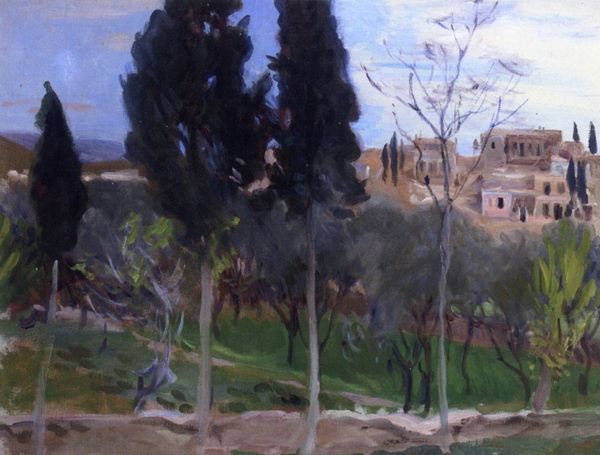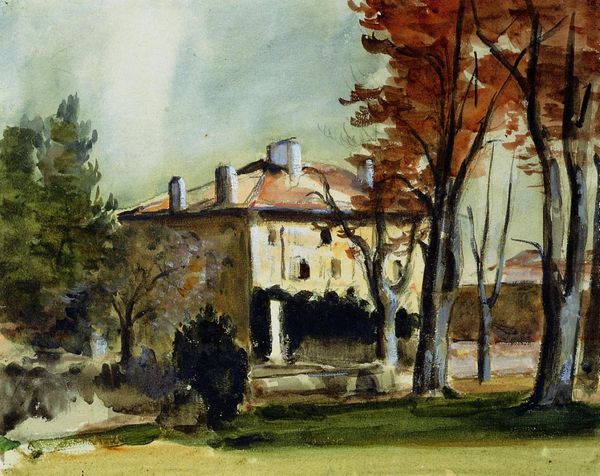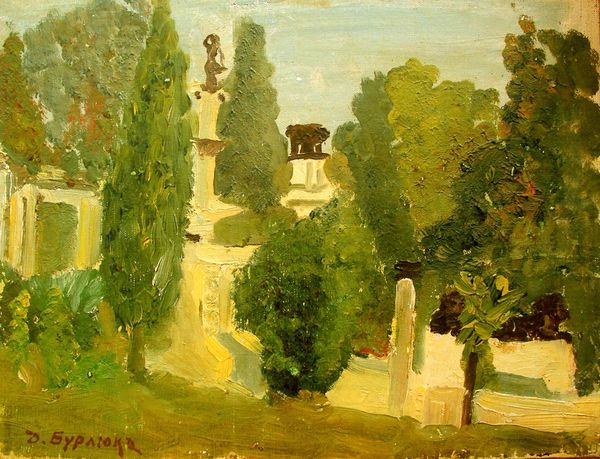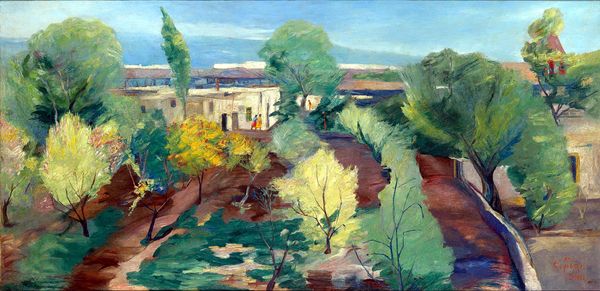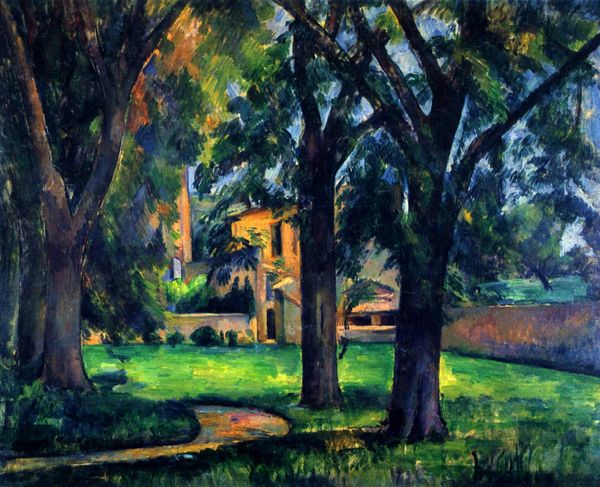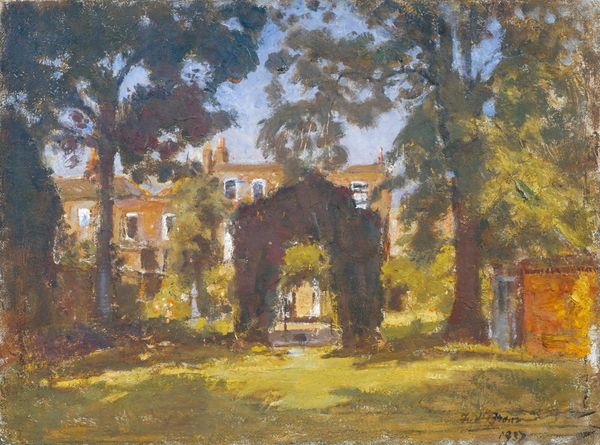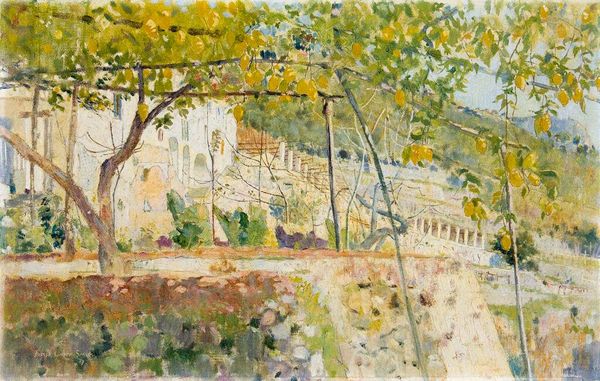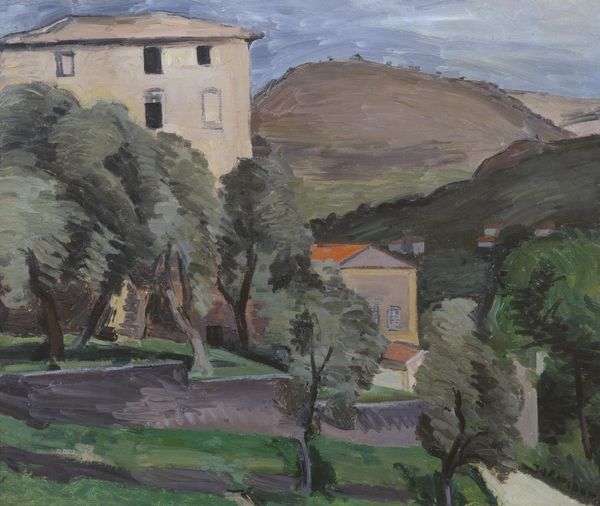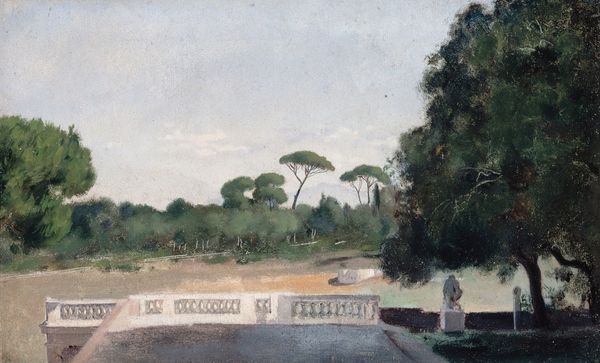
The Facade of the Villa d Este at Tivoli, View from the Gardens 1843
0:00
0:00
Dimensions: 20.3 x 29.8 cm
Copyright: Public domain
Curator: Look at the gentle greens and tans here, creating this tranquil vision in Corot’s 1843 work, "The Facade of the Villa d'Este at Tivoli, View from the Gardens". Editor: It strikes me as immediately dreamlike—the light, the muted colors... there’s a certain stillness, almost like time is suspended. Curator: That feeling makes perfect sense. This was created en plein air, which situates Corot within a larger artistic movement toward immediacy and sensory experience. And he returned to the Villa d’Este repeatedly, documenting how gardens of the aristocracy intersect with changing social consciousness across 19th-century Europe. Editor: The villa itself is presented almost as a theatrical backdrop, less solid building, more representation of idealized life... Do the trees mean anything specific, visually? The dark spires contrasting with that wispy central tree? Curator: That contrast can absolutely be read as intentional. Those darker, more formally shaped trees are cypress trees. Often linked with mourning and remembrance, their prominent placement certainly affects how we interpret notions of pastoral serenity, perhaps a subtle commentary on mortality that complicates romanticism. Editor: A bit of 'memento mori' tucked into the landscape. But wouldn’t you also say that those cypress act as obelisks of sorts? Evoking something primal or natural that nevertheless references monuments of man’s aspirations? And look how Corot frames that with wilder greenery in the foreground! Curator: Yes, that balance between formal gardens and wilder growth invites us to consider the tensions between control and nature. In its time, the notion of "landscape" was as much about power as about visual beauty. Corot invites critical questioning, while creating an inviting pastoral space that resonates for modern eyes and for contemporary discourse, particularly concerning questions of social structures that underpin landscape. Editor: Exactly. A tranquil image but the underlying meaning remains powerful. Thank you! Curator: Thank you. Examining such an ethereal work through social context and landscape power dynamics provides so much texture.
Comments
No comments
Be the first to comment and join the conversation on the ultimate creative platform.
